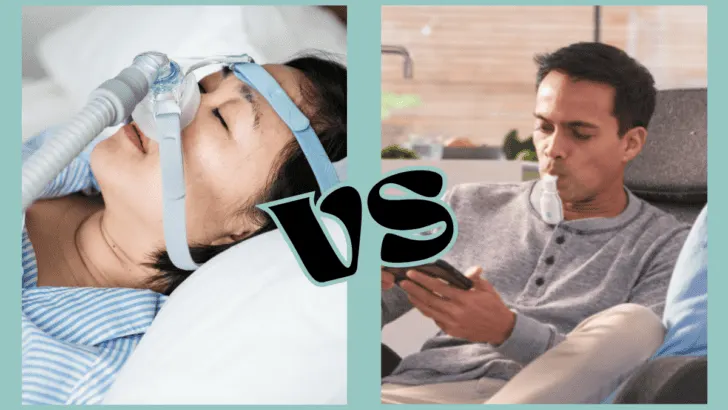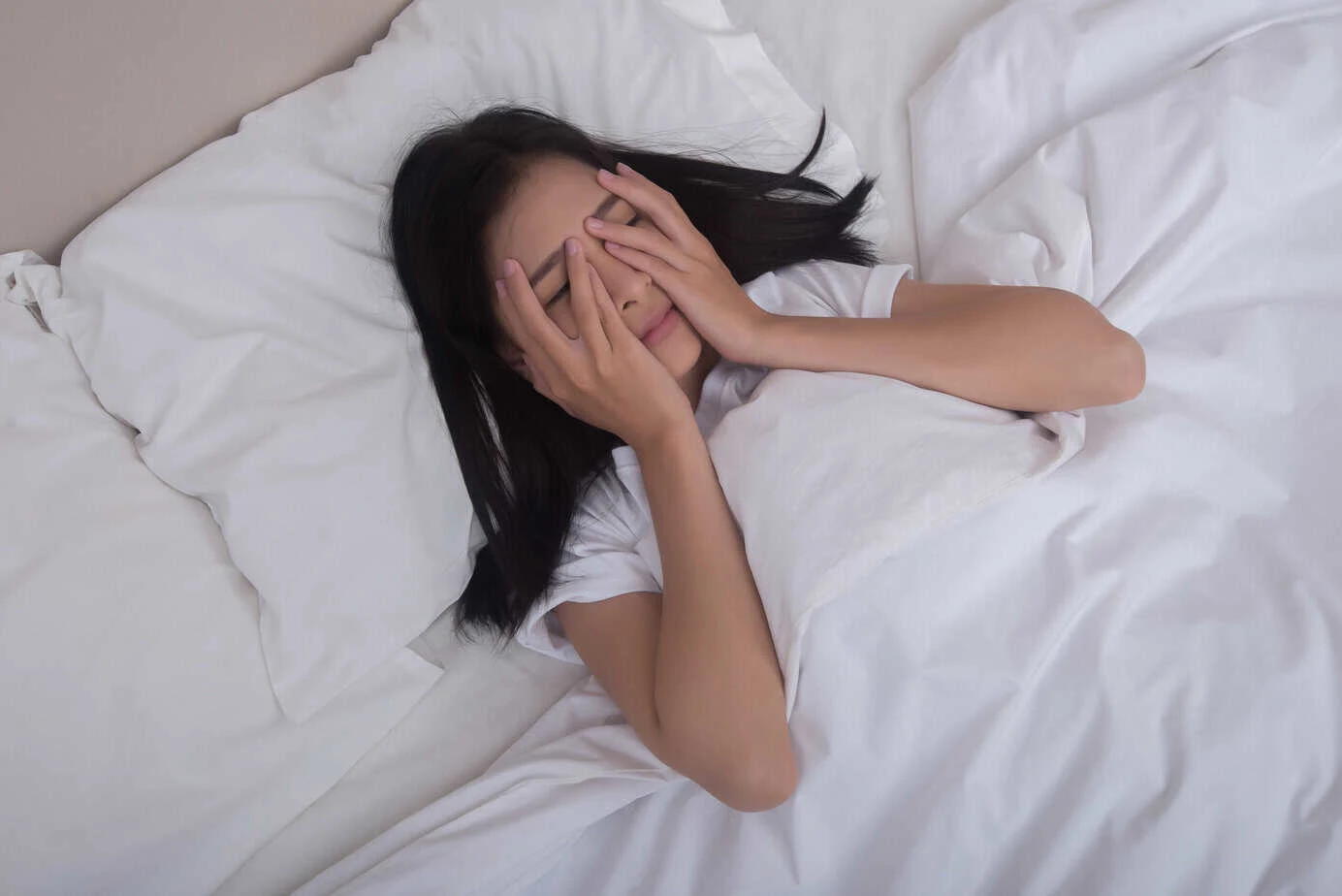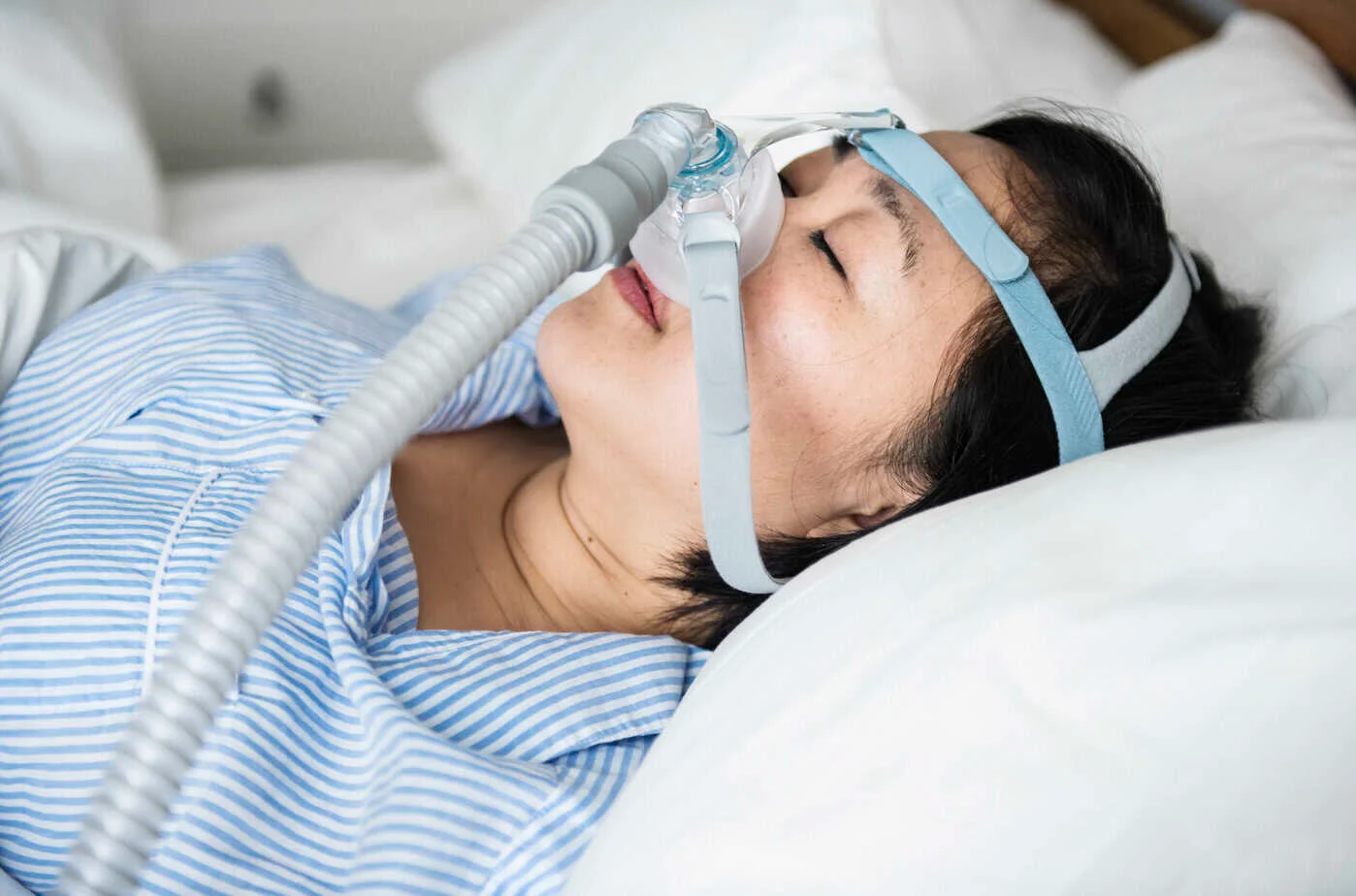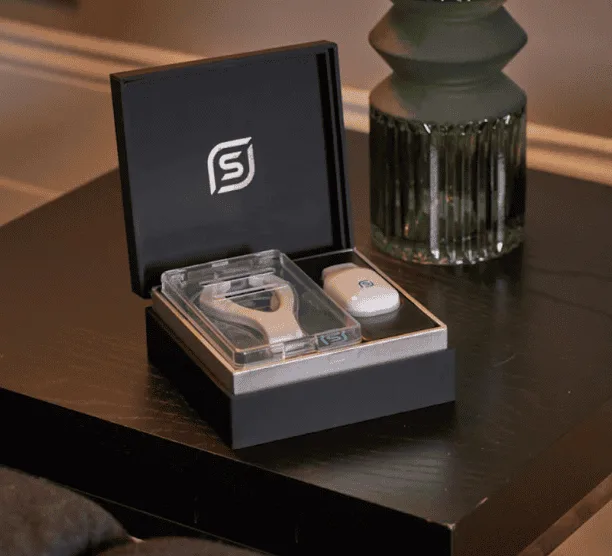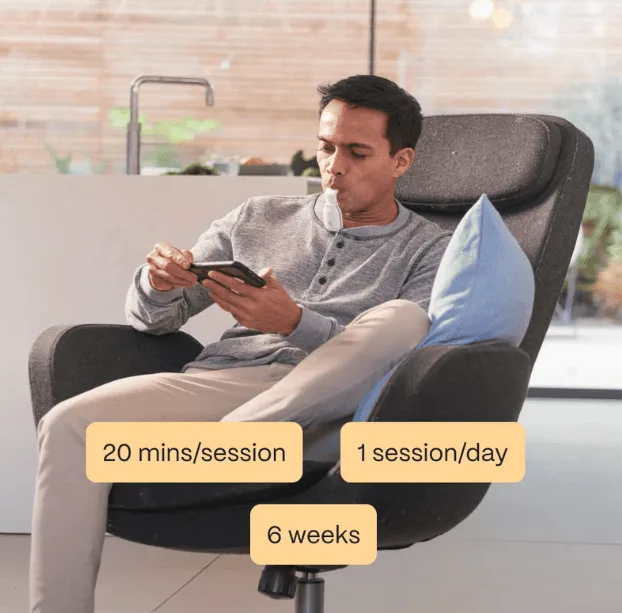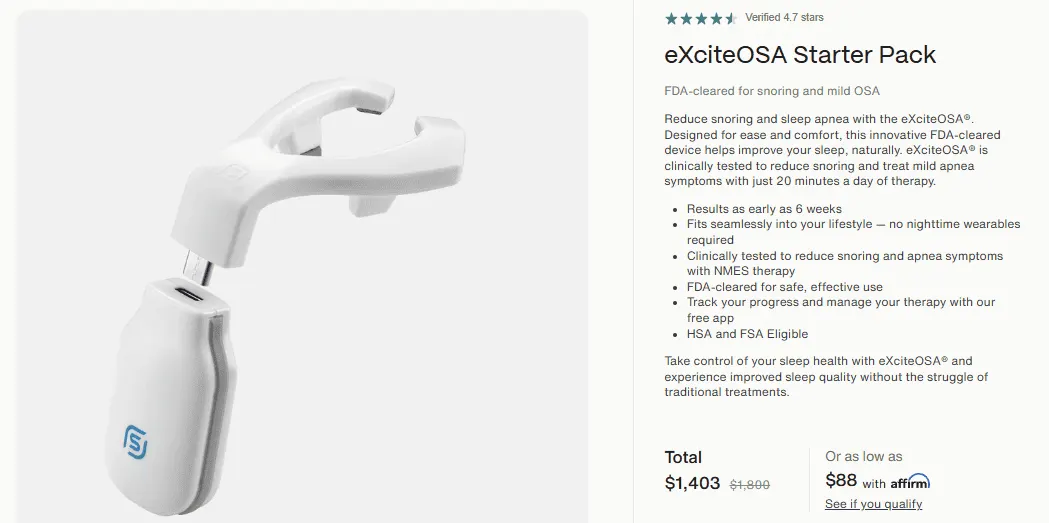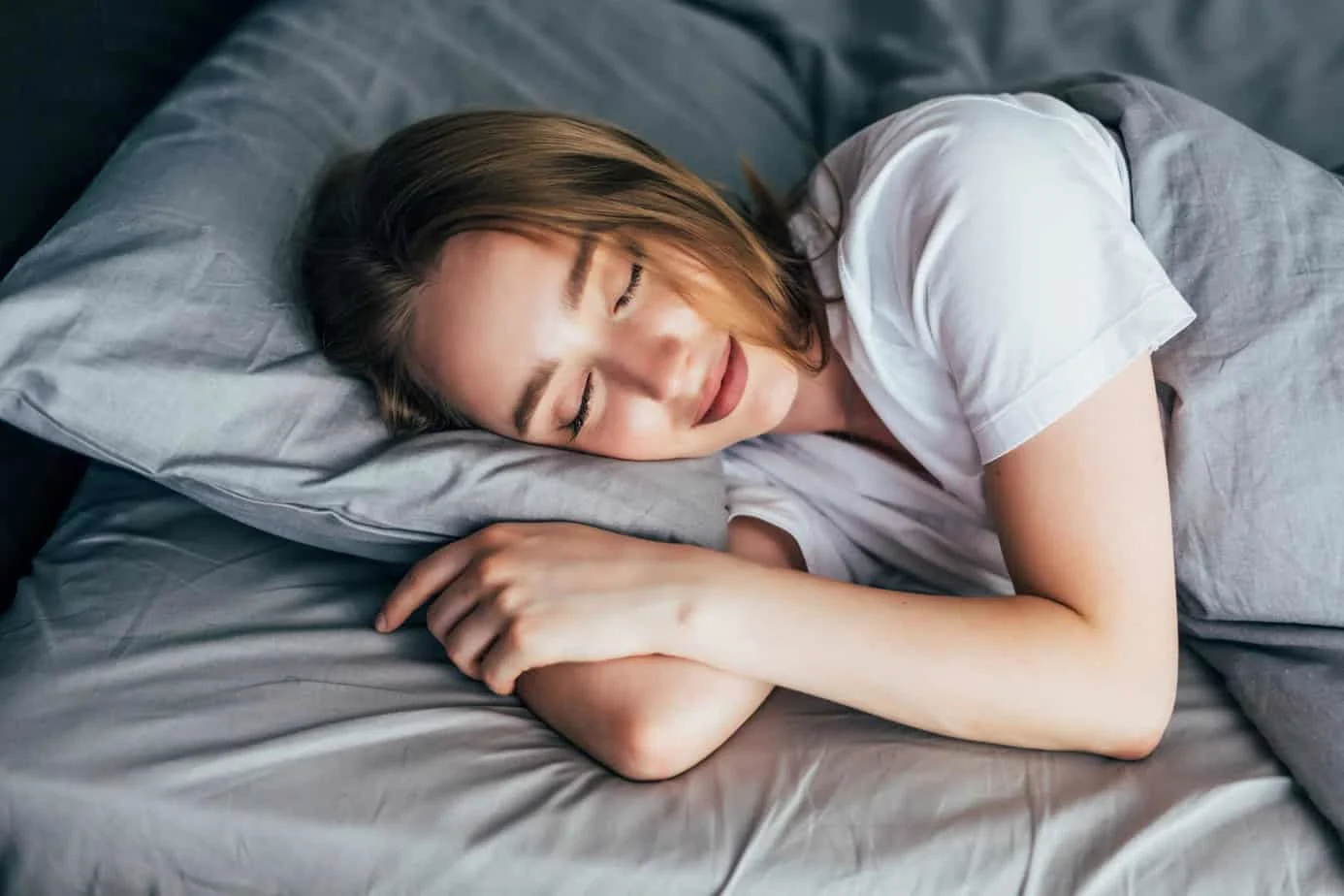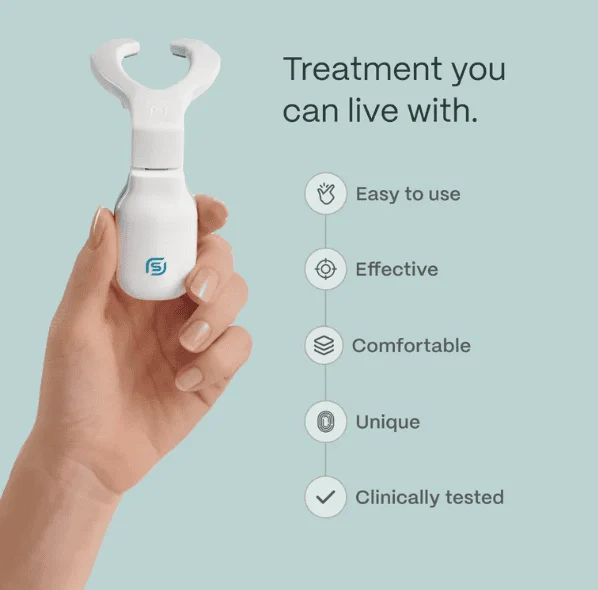- The 5 Best Anti-Snoring Devices in 2025 - December 17, 2025
- Real Relief From Hot Flashes: What Actually Works - December 15, 2025
- Best Sheets for Night Sweats - December 11, 2025
Disclaimer: I’m not a doctor. I’m just someone who snores, married to someone with sleep apnea, who has spent way too many late nights Googling every device under the sun. This is what I’ve learned, plus a little bit of my own experience. Always talk to your doctor before trying any of this.
Sleep Apnea: The Basics
Sleep apnea, in plain English, is when your airway collapses while you sleep. Your body does its best to keep breathing, but the soft tissue in your throat and tongue get in the way. That leads to pauses in breathing (apnea), partial blockages (hypopneas), and snoring that could rattle the windows. It also means restless sleep, grogginess in the morning, and long-term health issues if it’s ignored.
The short-term fallout is restless sleep, gasping awake, and grogginess that a gallon of coffee can’t fix. Long-term, ignoring sleep apnea increases your risk of high blood pressure, heart problems, type 2 diabetes, and just feeling like a permanently cranky version of yourself.
That’s the backdrop for why treatments like CPAP and eXciteOSA exist. Both go after the same problem: an airway that won’t stay open. But they go about it in completely different ways.
CPAP: The Old School Heavyweight
If you’ve heard of one treatment for apnea, it’s CPAP. Continuous Positive Airway Pressure is exactly what it sounds like: a bedside machine that blows pressurized air through a hose and mask to keep your airway propped open.
Here’s what a CPAP machine has going for it: when people use it, it works. Really works. It can take someone with an apnea-hypopnea index (AHI) of 30 (which means 30 interruptions per hour) and drop it down close to zero. For moderate and severe apnea, it’s the gold standard. Doctors love it because it’s been studied for decades, and the data is rock solid. It helps with blood pressure, heart health, and all the groggy brain fog that comes from never hitting deep sleep.
But there’s a catch – CPAP machines are effective only if you actually wear it. And that’s where people struggle. While CPAP masks have made huge strides in recent years to create better comfort, for many people, wearing anything while sleeping can feel claustrophobic. The air can dry you out. The machine takes up space and makes noise, so while you may not be snoring, you’re definitely still making your nighttime presence known.
Add in the cleaning routine – hoses, filters, humidifiers – and it’s not exactly a “set it and forget it” device. Travel with it? Sure, but you’ll be packing an extra bag. Power outage? Better put a generator in your Amazon cart. Some people adapt and swear by it; others leave it collecting dust on their nightstand.
So having a CPAP machine is almost like having a treadmill in your garage. It’s great if you actually use it. But if you don’t? It might be time to clear out some space and try a gym membership instead.
eXciteOSA: The New Kid
Now let’s talk about the flashy newcomer: eXciteOSA, sold by Spring Sleep. Unlike a CPAP machine, this isn’t something you wear overnight. Instead, it’s a daytime therapy that uses neuromuscular electrical stimulation to train your tongue.
Yes, your tongue.
The idea is that one of the main reasons your airway collapses is because the tongue muscles lose tone when you fall asleep (and the science backs it up!). eXciteOSA zaps those muscles back into shape with short bursts of electrical pulses, like a little workout for your tongue. Stronger, more toned tongue = less change it falls back and blocks your airway at night.
How it works:
- You put in a silicone mouthpiece for 20 minutes while you’re awake and hit “start session” on the accompanying app.
- The mouthpiece delivers stimulation in cycles.
- Rinse and repeat daily for six weeks, then shift to two times per week for maintenance.
The mouthpiece needs to be replaced every three months, and that’s non-negotiable, so this isn’t a one-and-done purchase. This is for your safety, though: biocompatibility tests performed by the FDA determined the timeframe to meet hygiene, safety, and efficacy standards. And let’s be honest: if I’m putting electricity in my mouth, even in a device that’s FDA-cleared, replacing the part covered daily in spit sounds like a smart idea.
And the results? There have been a ton of clinical studies testing the efficacy that show statistically significant reductions in both snoring and mild obstructive sleep apnea (OSA). According to one study of 65 mild apnea patients, 78% noticed a notable reduction in three OSA measurements. I could pull and throw more numbers at you, but the long and short of it is there’s real data showing real results for real people.
Is the research as deep as CPAP’s? No. CPAP machines have decades of clinical trials, and like the title of this section says, eXciteOSA is the new kid on the block. But the early results are promising, especially for people with mild apnea or for those who just want to give their partner the gift of a quiet night.
The Cost Factor
Money always matters, so let’s talk numbers.
CPAP machines are often covered by insurance if you’re diagnosed with mild, moderate, or severe apnea. That means out-of-pocket costs can be manageable, though there are ongoing expenses for masks, hoses, filters, and the occasional machine upgrade. Check with your individual insurance plan to see what may be covered.
eXciteOSA is different. While it is FDA-cleared, it takes time for insurance to approve coverage, which means you’re paying out of pocket. You can use HSA / FSA funds to purchase, and there’s a walkthrough in Spring Sleeps FAQs on how to do that. The starter kit is $1,650 and comes with both an initial mouthpiece and one free replacement. That said, Spring Sleep does offer a 90-day risk-free trial (and they say you should see results in four weeks), so if it doesn’t work, you can get your money back.
In short? CPAP machines are cheaper long-term, especially with insurance. eXciteOSA is an out-of-pocket expense, but HSA / FSA funds may help soften the blow.
Living With Each Device
This is where the contrast really hits home. Especially mine, where I’m the half that’s using an eXciteOSA, and my husband is the half using a CPAP machine.
CPAP is a lifestyle. You bring it on trips. You set it up every night. You clean it regularly. You fall asleep to the dulcet tones of Darth Vader breathing. But for those with moderate to severe apnea, it’s also a sanity saver – sleep deprivation is no joke, and the relief you can get from finally sleeping makes the lifestyle worth it.
eXciteOSA is more like a workout routine. You build the habit, carve out 20 minutes a day, and then shift into maintenance mode a few times a week. The changes are gradual, and if you stop using it, the improvements fade. So just like you don’t skip leg day, don’t skip tongue training. And for those with mild apnea or who just want to get a handle on their snoring, having a daytime option you can use while binging Ted Lasso for the 47th time? Perfection.
Side Effects and Comfort
Neither therapy is without annoyances.
With CPAP therapy, the big complaints are dryness, congestion, bloating from swallowing air, skin irritation, and the ever-present mask leaks that whistle at 3 am. For some, that’s manageable. For others, it’s deal-breaking.
With eXciteOSA, the main side effects are tingling or discomfort on the tongue, extra salivation, or mild soreness from the electrical stimulation. Most people get used to it after the first week or so, but it’s definitely a weird feeling at first.
Serious side effects are rare for both. But it’s worth noting that eXciteOSA has a list of those who shouldn’t use their therapy: pregnant persons, those with pacemakers, those with dental jewelry in their mouths, those who have mouth ulcers, and those who have an AHI of 15 or higher as determined by a sleep study.
Who They’re Best For
If I had to sum it up:
- CPAP is still the go-to for moderate to severe apnea, or for people who want the most proven, immediate fix.
- eXciteOSA is designed for people with mild apnea or snoring who don’t want to – or can’t – sleep with a CPAP.
My Take
Watching my partner wrestle with a CPAP machine for years, and then trying eXciteOSA myself for snoring, I can tell you this: there’s no one-size-fits-all solution. CPAP is a lifesaver if you can tolerate it. eXciteOSA is a freedom machine if you’re in the mild category and willing to commit to the cost and routine.
It comes down to trade-offs. Do you want something that’s guaranteed to work but requires strapping in every night? Or do you want something that’s lower maintenance at night but higher effort during the day, with results that are promising but still newer in the research world?
For some people, the choice is obvious. For others, it’s worth experimenting, especially with eXciteOSA’s trial period. Because honestly? Anything that helps you (and your bed partner) actually sleep through the night is worth exploring.
The Bottom Line
- CPAP: proven, powerful, insurance-friendly, but clunky and tough.
- eXciteOSA: innovative, convenient, night-free, but pricey with ongoing purchases needed.
If your doctor says you need a CPAP, don’t ignore that – it’s still the most effective therapy out there for moderate and severe apnea. But if you’re in the mild zone, or if wearing a CPAP makes you feel like Darth Vader, eXciteOSA might be the alternative that finally gives you (and your partner) a quiet night’s rest.

